Pomegranates are among the oldest cultivated fruits, valued for their jewel-like seeds, sweet-tart flavor, and rich health benefits. Native to the Middle East and Mediterranean regions, pomegranates thrive in hot, dry climates — making them perfect for gardeners in warmer zones.
If you live in USDA zones 7-11, growing pomegranates can be a rewarding and relatively low-maintenance gardening project. In this complete guide, we’ll cover everything you need to know about growing pomegranates in warmer zones — from choosing the right variety to planting, caring, and harvesting.
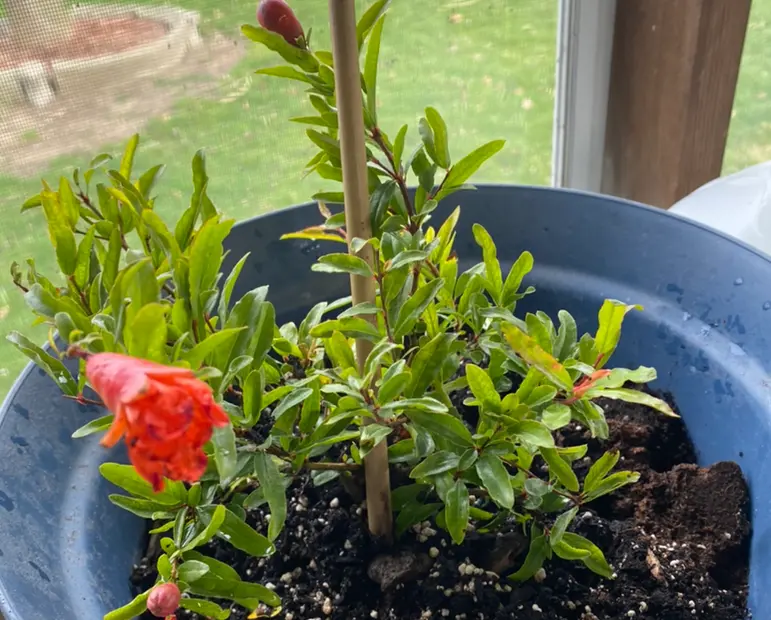
Why Grow Pomegranates?
Pomegranates aren’t just beautiful and delicious; they also offer plenty of perks for the home gardener:
- Heat and drought tolerant once established
- Ornamental value with bright orange-red flowers and glossy foliage
- Rich in antioxidants, fiber, vitamins C and K
- Long-lasting fruit that stores well
- Can be grown as trees, shrubs, or even large container plants
Plus, few things match the satisfaction of cracking open a sun-ripened pomegranate from your own garden.
Best Pomegranate Varieties for Warmer Zones
Before planting, it’s important to choose a variety suited to your region and taste preferences. Here are a few top picks for gardeners in warmer climates:
Wonderful
- Most popular home and commercial variety
- Large, dark red fruit with sweet-tart flavor
- Ripens in late summer to fall
Angel Red
- Early-bearing, with vivid red, extra-juicy arils
- Less tart than Wonderful
- Soft-seeded
Parfianka
- Highly regarded for flavor — sweet with a hint of acidity
- Medium to large fruit
- Soft edible seeds
Desertnyi
- Rich, complex flavor with citrus undertones
- Medium-sized fruit
- Early ripening
Tip: If you live in USDA zones 7-8, choose cold-hardy varieties like ‘Kazake’ or ‘Salavatski,’ which tolerate temperatures down to 5°F.
Ideal Growing Conditions for Pomegranates
Sunlight
Pomegranates love the sun. Choose a spot that receives at least 6-8 hours of full sunlight daily for optimal flowering and fruit production.
Soil
- Prefers well-draining loamy or sandy soil
- Tolerates slightly acidic to neutral pH (5.5-7.5)
- Avoid heavy clay or waterlogged areas
Tip: Raised beds or berms can improve drainage if your soil is marginal.
Temperature
- Best suited to USDA zones 7-11
- Requires hot, dry summers and cool winters to set fruit
- Mature trees tolerate temperatures up to 110°F and occasional winter dips to 15°F
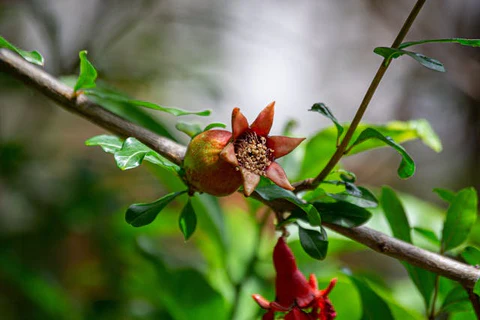
How to Plant Pomegranates
When to Plant
- Best planted in early spring or fall in milder climates
- Container-grown pomegranates can be planted anytime the soil is workable
Spacing
- Space trees 12-20 feet apart
- If grown as shrubs or hedges, plant 6-9 feet apart
Planting Steps
- Dig a hole twice as wide and the same depth as the root ball.
- Loosen surrounding soil to encourage root growth.
- Place the tree in the hole, ensuring the root crown is level with the soil surface.
- Backfill with soil and compost mix, firming it gently around the roots.
- Water thoroughly to eliminate air pockets.
- Mulch around the base to retain moisture and suppress weeds.
Caring for Pomegranate Trees
Once established, pomegranates are fairly easy-care. Here’s how to keep them thriving in warmer zones:
Watering
- Water deeply every 7-10 days during the growing season
- Newly planted trees need consistent moisture
- Reduce watering in late summer to encourage ripening
- Avoid overwatering, as it can cause fruit cracking
Pro Tip: Deep, infrequent watering encourages deep root systems and improves drought tolerance.
Fertilizing
- Feed with a balanced fertilizer (10-10-10) in early spring as new growth begins
- Apply a second feeding in late spring or early summer if needed
- Avoid excessive nitrogen — it encourages leafy growth over fruit production
Pruning
- Light pruning is recommended in late winter or early spring
- Remove dead, damaged, or crossing branches
- Thin out inner branches to improve light and air circulation
- Prune suckers from the base to maintain tree shape
Optional: Pomegranates can be grown as a multi-trunk shrub or trained into a single-trunk tree.
Growing Pomegranates in Containers
If you have limited garden space or live in a cooler microclimate, pomegranates grow well in large containers.
Container Requirements
- Use a 15-25 gallon container with good drainage
- Plant in a well-draining potting mix blended with sand or perlite
- Choose a dwarf variety or compact cultivar
Tip: Container plants need more frequent watering and fertilizing than ground-planted trees.
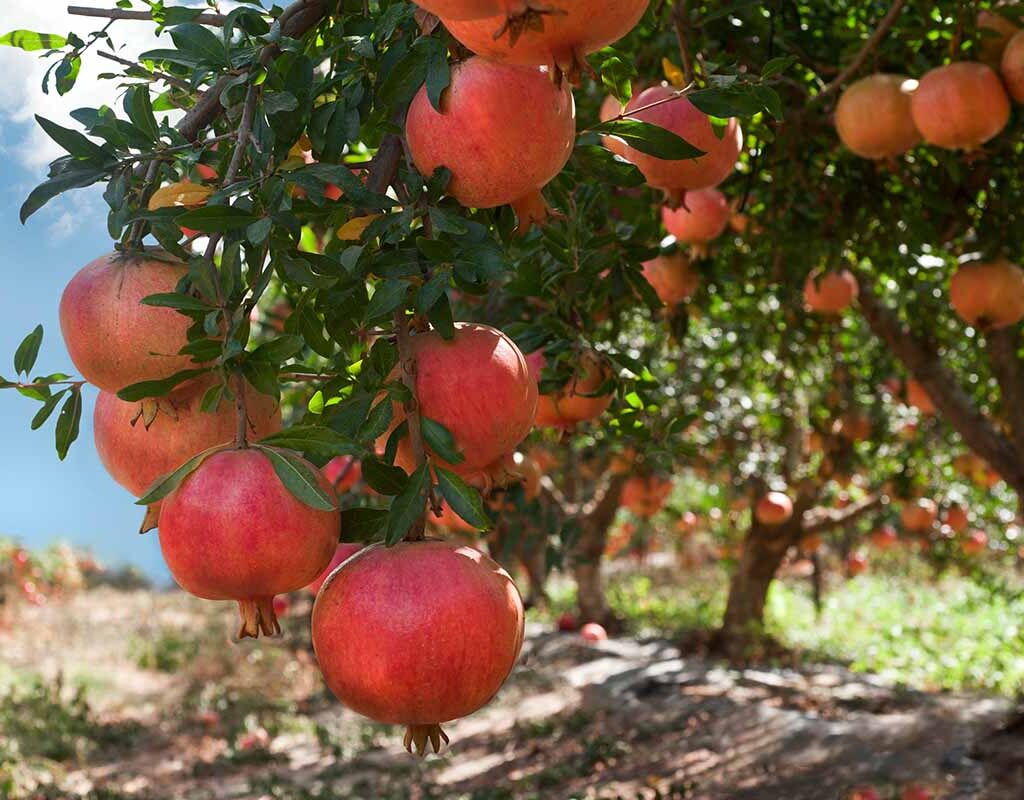
Harvesting Pomegranates
When to Harvest
- Pomegranates are typically ready 5-7 months after flowering
- Most varieties ripen between late summer and early fall
Signs of Ripeness
- Fruit turns deep, uniform color
- Skin becomes slightly glossy and hard
- A gentle tap produces a metallic sound
- Cracking fruit is a sign it’s overdue for picking
How to Harvest
- Cut fruit from the tree with sharp pruning shears, leaving a short stem attached
- Avoid pulling — it can damage branches
Storage Tip: Whole pomegranates can be stored in a cool, dry place for up to 2 months, or in the refrigerator for up to 5 months.
Common Pests and Problems
Pests
- Aphids: Suck sap from young shoots. Use insecticidal soap or a strong water spray.
- Leaf-footed bugs: Pierce fruit causing blemishes. Handpick or use row covers.
- Whiteflies: Feed on undersides of leaves. Control with horticultural oil or neem oil.
Diseases
- Fruit rot and anthracnose: Caused by excess moisture. Avoid overhead watering and improve air circulation.
- Root rot: From poor drainage. Plant in well-draining soil and avoid overwatering.
Bonus: Pomegranates are generally resistant to most pests and diseases, especially in dry, warm climates.
Propagating Pomegranates
Pomegranates can be propagated by:
- Seeds: Slow and variable in fruit quality
- Cuttings: Take hardwood cuttings in winter, 8-10 inches long
- Suckers: Remove and replant rooted suckers from established plants
For reliable fruiting, most home gardeners prefer buying a young, grafted plant.
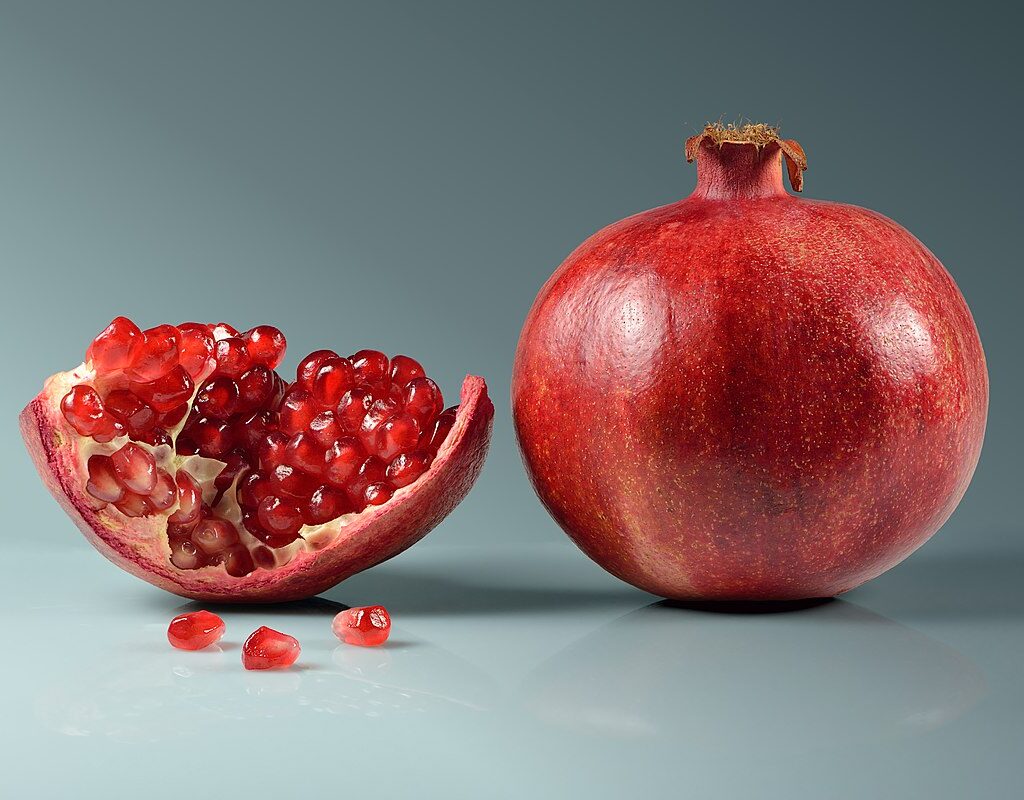
Health Benefits of Pomegranates
Besides their ornamental charm, pomegranates are a nutritional powerhouse:
- Rich in antioxidants: Help combat free radicals
- High in vitamin C: Boosts immunity
- Good source of fiber: Supports digestion
- Contains anti-inflammatory compounds: May reduce heart disease risk
- Low in calories: Sweet, healthy snack
Final Thoughts: A Heat-Loving Beauty for Your Garden
Growing pomegranates in warmer zones is not only possible — it’s a rewarding and surprisingly simple way to enjoy fresh, antioxidant-rich fruit from your own backyard. With their gorgeous blooms, glossy leaves, and gleaming ruby fruit, pomegranate trees add beauty and function to any warm-climate garden.
Whether you have room for a full-sized tree or a container on the patio, with a little sun, water, and care, you’ll be savoring homegrown pomegranates in no time.

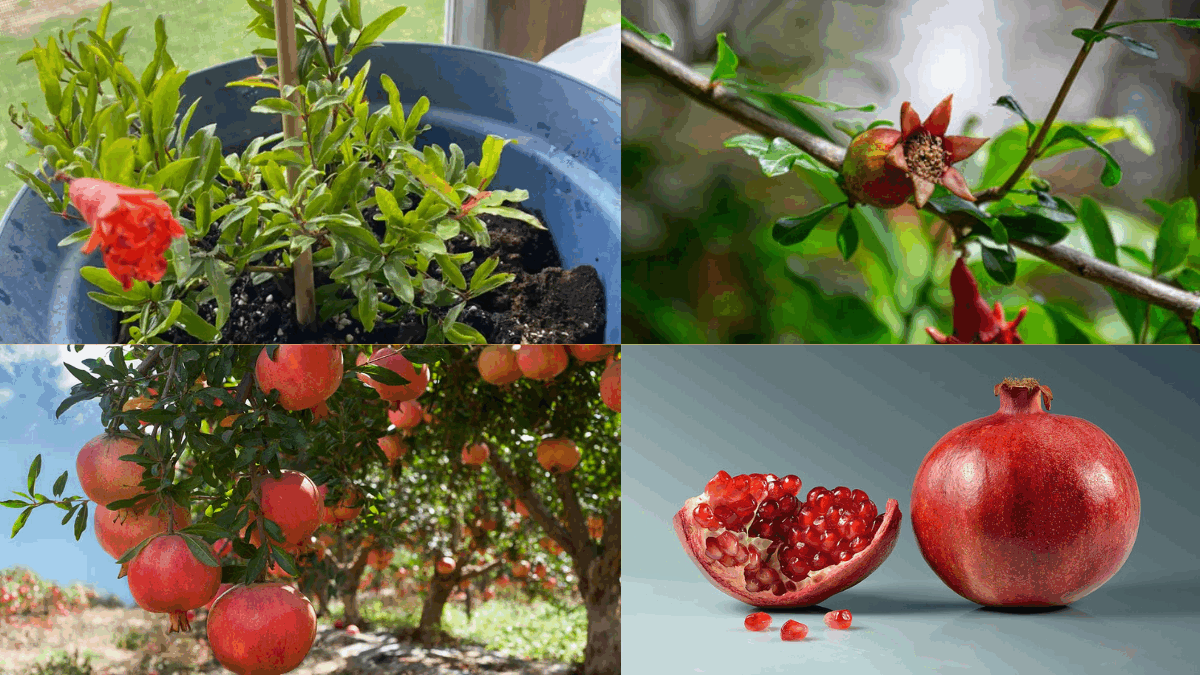




Leave A Comment